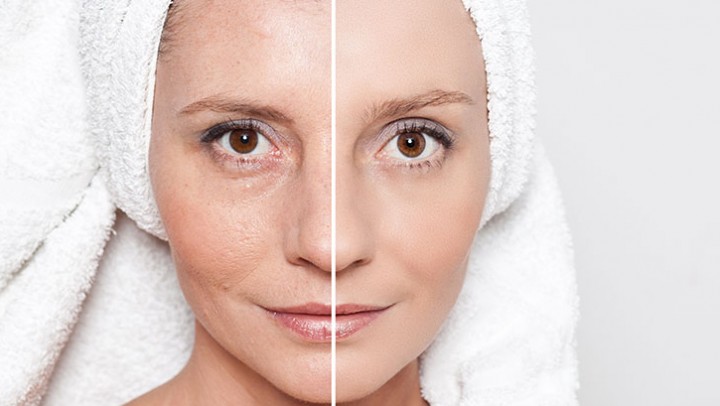


Facial Scar Removal: Getting Rid of Unwanted Scars
Scar Revision Surgery
Scar revision surgery is meant to minimize the scar so that it’s more consistent with your surrounding skin tone and texture. Scars are visible signs that remain after a wound has healed. They are unavoidable results of injury or surgery, and their development can be unpredictable. Poor healing may contribute to scars that are obvious, unsightly or disfiguring. Even a wound that heals well can result in a scar that affects your appearance. Scars may be raised or recessed; different in color or texture from surrounding healthy tissue; or particularly noticeable due to the size, shape, or location. Although scar revision can provide a more pleasing cosmetic result or improve a scar that has healed poorly, a scar cannot be completely removed. Scar revision treatments include:- Topical treatments—such as gels, tapes, or external compression can help in wound closure and healing, or to reduce the ability of skin to produce irregular pigment. These products may be used to treat existing surface scars and discoloration, and to aid in healing of scar revision procedures.
- Injectable treatments—are often used to fill depressed or concave scars. Depending on the injectable substance used and your particular scar conditions, results may last from three months to several years. Therapy must be repeated to maintain results. One form of injection therapy uses steroidal-based compounds to reduce collagen formation and can alter the appearance, size, and texture of raised scar tissue.
- Surface treatments—are most often used for cosmetic improvements of scars. These methods can soften surface irregularities and reduce uneven pigmentation. Surface treatments are a controlled means of either mechanically removing the top layers of skin or changing the nature of tissue. These treatment options include: dermabrasion (a mechanical polishing of the skin), laser or light therapy (causes changes to the surface of the skin that allow new, healthy skin to form at the scar site), chemical peel solutions (penetrate the skin’s surface to soften irregularities in texture and color), and skin bleaching agents (medications applied topically to lighten the skin).
Scar Removal: Home Remedies
The human body is capable of taking care of scars and they tend to get lighter with time, but there are some home remedies that you can try to speed up the healing process, including: Aloe Vera—a natural scar removal remedy due to its anti-inflammatory and antibacterial properties. Apply aloe vera twice daily, but do not use on open wounds.- Peel the outer green cover off an aloe vera leaf and scoop out the gel-like substance.
- Apply the gel on your scar and massage in circular motions.
- Leave it on for about 30 minutes, then wash it off.
- Apply some warm extra-virgin olive oil to the affected area and massage using small, circular motions. Wait 30 minutes, then wipe off the oil with a clean cloth. You can also leave the oil on your skin overnight.
- Another option is to mix a little lavender oil in some extra-virgin olive oil, apply it on the affected area and massage gently for a few minutes. Leave it on for 20 to 30 minutes, then rinse it off with lukewarm water.
- Apply some lemon juice on the affected area.
- Wait 10 minutes, then rinse it off with warm water.
- Apply some honey over the scar, cover it with a bandage, and leave it on overnight.
- The next morning, wash it off with warm water.
Speak with Dr. Binder
If you decide that home remedies aren’t doing enough to fade your scars, then you should talk to Dr. Binder about the surgical scar removal options that might work best for you. With years of experience in his field, he as the expertise to help you make the right decision about how best to deal with your unwanted scars.
9 Facial Skin Health Tips for Winter
9 Tips for Healthy Winter Skin
- Cleansing—is an important routine to be followed all throughout the year. In the winter time, you can limit the number of times you wash your face from three times to two times. You can also alternatively cleanse your face with cold milk and cotton balls to cut down on the excessive dryness.
- Scrubbing—avoid daily scrubbing as it may cause severe abrasion and make skin even drier. Try using a mild exfoliating scrub once or twice a week. You can also enhance your scrubbing experience by adding the following ingredients to make your innovative fruit scrub:
- 2 tbsp. mashed ripe banana
- 2 tbsp. of a mashed apple
- 1 tbsp. honey
- 2 dollops of your mild scrubMix all and go for gentle clockwise and counter-clockwise finer movements to scrub your face for two minutes; while washing off with warm water, ensure you pat dry with a soft towel.
- Toning—is a must for all those who have aging and sagging skin concerns. Otherwise you can leave your pores open in winter for more oil secretion.
- Moisturizing—is important for all skin types, not just those with very dry and flaky skin. You can indulge in natural moisturizing by using warm almond and extra virgin olive oil, and use it as a night massage routine. Alternatively, you can mix the oil with your normal cold cream and lotion, too.
- Face packs—there are hundreds of ingredients in your kitchen that can be highly effective to make your skin become soft and supple in the winter season. Here are a few that you can make use of:
- Avocado face pack—use mashed ripe avocado on face for about 10-15 minutes before washing off with warm water. Apply a light moisturizer instead of toner.
- Banana face mask—take 4 to 5 tbsp. of mashed ripe banana and massage it on the face. Wash off after 10 minutes then massage your face with honey, in circular motions, for that extra moisturizing feel. Do so for at least 10 minutes before applying toner.
- Butter milk pack—use malai or fresh butter milk with a pinch of turmeric, letting it sit on the face for about 10 minutes, and then wash off with lukewarm water.
- Aloe Vera—can be used on the face as a moisturizer. It is the perfect way to relieve your face from dryness, while enhancing the texture by making it softer.
- Keep hydrated—don’t forget that your skin needs hydration from the inside, out. A little warm water with lemon can be very refreshing and hydrating at the same time. Eating foods high in water content can also help hydrate your skin. Try watermelon, cantaloupe, apples, oranges, kiwi, and watery veggies like celery, tomatoes, cucumbers, zucchini, and carrots.
- Sunscreen—isn’t just for the summertime. Winter sun—combined with snow glare—can still damaged your skin. Try applying a broad-spectrum sunscreen to your face about 30 minutes before going outside. Reapply frequently if you stay outside for a long time.
- Hook up the humidifier—central heating systems blast hot dry air throughout the home and office. Humidifiers get more moisture in the air, which helps prevent your skin from drying out. Place several small humidifiers throughout your home so that they can help disperse moisture more evenly.
- Ban super hot baths—the intense heat of a hot shower or bath actually breaks down the lipid barriers in the skin, which can lead to a loss of moisture. A lukewarm bath with oatmeal or baking soda can help relieve skin that is so dry it has become itchy.
Seek a Specialist
If you find that your skin isn’t looking the way that you want this winter, then you should consider seeking help from a professional. Book an appointment with Dr. Binder, so that he can help you figure out what surgical or non-surgical facial routine might work best for you.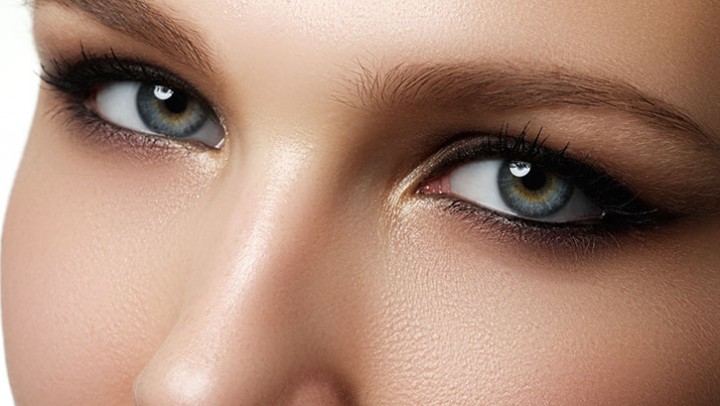
The Aesthetic and Health-Related Benefits of Blepharoplasty
It is evident that plastic surgery and cosmetic procedures have aesthetic benefits, but many of these procedures can have impacts on the health of patients, as well. One such procedure is blepharoplasty.
Blepharoplasty, also called eyelid surgery or an eye lift, is a procedure that removes excess skin by removing and relocating soft tissue surrounding the eyes, including fat and even muscle, in order to improve the appearance or resolve health issues. This is a serious procedure that can involve major changes to the eye area, but recovering from the procedure is relatively easy and usually only takes one to two weeks.
Aesthetic Benefits of Blepharoplasty
Cosmetic blepharoplasty is most often thought of as an age-reversing and revitalizing procedure. This procedure reduces under eye bags, sagging upper lids, and puffiness surrounding the eyes. This opens up the appearance of the eyes and gives a more alert, awake, and youthful appearance. It can also sometimes remove wrinkles and creases resulting from bags, sagging, and puffiness, and can remove or minimize the appearance of dark circles under the eyes. However, blepharoplasty cannot remove crow’s feet or improve the appearance of dark circles that are due to thin skin or hyperpigmentation of the skin.
Cosmetic eyelid surgery can be performed alongside other procedures for a more comprehensive revitalization or to address aesthetic issues that blepharoplasty alone cannot resolve. Crow’s feet and other types of wrinkles can be addressed with lifts, such as face lifts and brow lifts, or injected dermal fillers, such as Botox. Skin resurfacing treatments, injected dermal fillers, and custom facial implants and reconstruction can be used to improve the appearance of dark circles due to hyperpigmentation and fill in shadowy hollows under the eyes.
Health Benefits of Blepharoplasty
People don’t typically think of plastic surgery as having health benefits, and blepharoplasty is typically performed for cosmetic reasons. However, blepharoplasty, like many plastic surgery procedures, has health benefits, as well. These benefits extend to both the mental and physical health of patients.
Patients seeking eyelid surgery for health reasons can also have the appearance of the eye area improved at the same time, and may be eligible to have insurance cover the cost of the procedure.
Mental Health Benefits
Many plastic surgeries can benefit patients’ mental health by improving their self-confidence, and eyelid surgery is no exception. Not all patients will see improved self-esteem from plastic surgery, but patients who are highly dissatisfied with a particular aspect of their appearance that can be addressed by the procedure and have realistic expectations can greatly benefit.
People with high self-esteem are less likely to experience mental health issues, such as eating disorders, anxiety, and depression, among others. They are also more likely to have socially healthy and fulfilling lives. They are able to foster healthier relationships, are more comfortable expressing themselves, and form healthy and realistic expectations for themselves and those around them.
Physical Health Benefits
The improvements to mental health can have implications for physical health, as well. Eating disorders take a toll on the body, weakening tissue and making the person more prone to illness. People with high self-esteem are also more likely to take care of themselves, such as by pursuing a healthy exercise routine and making other healthy choices.
However, these are not the only ways that blepharoplasty can improve the physical health of patients. Many people have excess sagging of the upper lid that leads to obstruction of the upper portion of their field of vision. This can be the result of aging, physical trauma, or illness. Eyelid surgery can help correct this vision obstruction by eliminating the excess skin and displaced tissue, clearing the field of vision.
Dr. William J. Binder
Dr. William J. Binder is an experienced plastic surgeon based out of Los Angeles and is considered one of the world’s best plastic surgeons. He is double board certified, extensively published (largely in peer reviewed publications), and has 10 patents on medical devices and pharmaceuticals.
Whatever your reason for choosing blepharoplasty, you deserve the best possible surgeon. Contact Dr. Binder’s office today to schedule your consultation with one of the best.
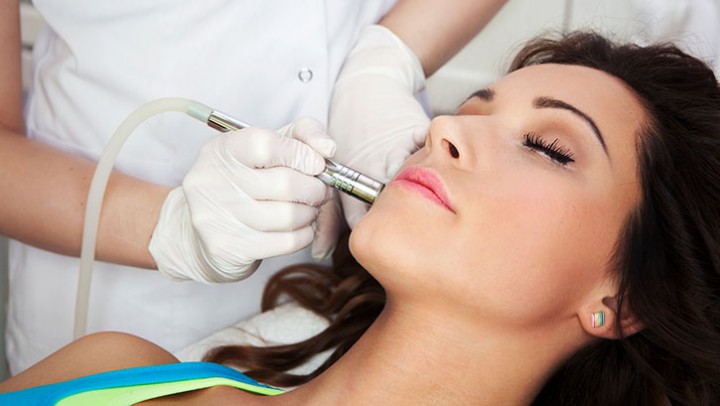
Skin Pigmentation Changes: What are the Causes?
Dr. William J. Binder is located in Los Angeles, but he is known the world over as one of the industry’s leading plastic surgeons. He has the skill and resources to not only evaluate and treat your pigmentation changes, but to make the process as easy and stress-free as possible. If you’re sick of living with skin discoloration, contact Dr. Binder’s office today to schedule a consultation.
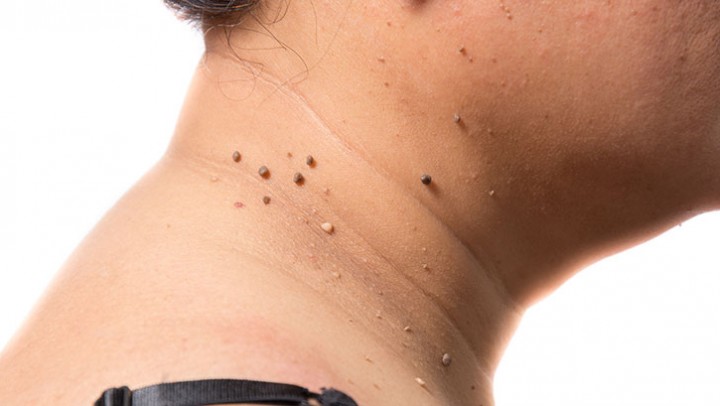
Dealing with Cancerous Moles
Know Your Stages
Let’s start with the good news: the sooner you identify a cancerous mole, the better your chances are to avoid more serious health concerns down the road. For example, patients with a Stage One prognosis have higher odds of beating cancer than those with a Stage Four assessment. Before moving on, let’s define these terms. STAGE ZERO - This diagnosis means that there are no cancer cells detected yet, but the presence of abnormal pre-cancerous cells that must be monitored. STAGE ONE - The earliest stage of cancer growth, this phase is typified by the fact that the affected cells are all contained in one finite area of the body. STAGE TWO - This is when cancer has spread to adjoining regions of the inception point. STAGE THREE - As cancer spreads further, it could infect your lymph nodes or other sensitive tissue matter. STAGE FOUR - At this point, cancer has metastasized and branched out to various parts of the body, making its eradication more complicated. But complicated doesn’t mean impossible, so let’s focus on the positive and work together to fight cancer before it spreads. Here’s how to determine whether or not your moles may be cancerous. Types of Moles and How They Look- Normal mole—is a harmless spot that develops in childhood and later in life and can be found anywhere. Typically, normal moles are smaller than a pencil eraser and are round and symmetrical with smooth borders and an even color.
- Dysplastic nevus—is a type of mole that looks different from a common mole. It can have a mixture of several colors, from pink to dark brown, and is usually flat with a smooth, slightly scaly, or pebbly surface, with an irregular edge that may fade into the surrounding skin.
- Actinic keratosis—is a common precancerous growth often found on your scalp, face, hands, or forearms. They are a rough, flesh-toned pink or red patch that may be itchy or scaly. Actinic keratosis should be removed because five to 10 percent of them can become cancerous.
- Basal cell carcinoma—is caused by sun damage and typically found on the face. It normally appears as a pinkish or reddish patch that may bleed or scab. This type of cancer is easy to treat if caught early.
- Squamous cell carcinoma—this type of cancer often appears on the body, legs, or hands and is curable if caught early. It appears as a thick growth that can peel and bleed and may have an irregularly shaped border.
- Melanoma—this serious form of cancer can spread quickly, but is curable if caught early. Alert your doctor if you see a dark, irregularly shaped growth with an uneven reddish-brown, brown, or black coloring.
What is Melanoma?
Melanoma is a type of skin cancer that begins in melanocytes. It is potentially dangerous because it can invade nearby tissues and spread to other parts of the body, such as the lung, liver, bone, or brain. Since most melanocytes are in the skin, melanoma can occur on any skin surface. It can develop from a common mole or dysplastic nevus, and it can develop in an area of apparently normal skin. In addition, melanoma can also develop in the eye, the digestive tract, and other areas of the body. Often the first signs of melanoma are a change in the shape, color, size, or feel of an existing mole. Melanoma may also appear as a new colored area on the skin. The early features of melanoma are:- Asymmetry—This is defined as a mole that is off-kilter. In other words, if the shape of one half does not match the other half, then it is asymmetrical.
- The border is irregular—If the edges of your mole are ragged, notched, or blurred in outline, then it qualifies as irregular. The pigment may spread into its surrounding skin in these cases.
- A color that is uneven—Shades of black, brown, and tan may be present in some cancerous moles. Areas of white, gray, red, pink, or blue may also be seen.
- Diameter—Be aware if there is a change in size, usually an increase. Melanomas can be tiny, but most are larger than ¼ inch wide.
- Evolving—If the mole has changed over the past few weeks or months, then be sure to contact your doctor as soon as possible.
Screening and Prevention
The only way to diagnose melanoma is to remove tissue and check it for cancer cells. Your doctor will remove all or part of the skin that looks abnormal. Usually, this procedure only takes a few minutes and can be done in a doctor’s office, clinic, or hospital. The sample will be sent to a lab and a pathologist will look at the tissue under a microscope to check for melanoma. If you want to help prevent melanoma, then you need to be sun smart. Here are some tips on how you can be sun smart:- Spend time in the shade between 11 am and 3 pm
- Wear a T-shirt, hat, and sunglasses
- Use sunscreen with at least SPF 15 (the higher the better), with good UVA protection (the more stars the better)
- Avoid sunbeds as they are not a safe alternative to tanning outdoors (the intensity of the UV rays can be 10-15 times higher than that of the midday sun)
- Fair skin
- Lots of moles and freckles
- Red or fair hair
- Had skin cancer before
- A family history of skin cancer
Early Detection Yields Healthy Results
The stages outlined above give doctors and patients a roadmap of how to maneuver the detection and treatment of potentially cancerous moles. Case in point: one comprehensive study recorded the survival rates of approximately 60,000 patients recovering from melanoma diagnoses. This is what they found:- People who identified their affliction during Stage One-A recorded a 97% rate of survival after the five-year mark. That same group boasted a 10-year survival rate of approximately 95%.
- The numbers dip slightly when we move on to Stage One-B. 92% of that subgroup survived the five-year benchmark while 86% went on to the 10-year milestone.
- Stage Two saw lower statistics. The five-year survival numbers for 2-A patients were about 81% and the 10-year rate was around 67%. Stage Two-B marked a 70% rate for the five-year study and 57% at the 10-year mark.
- Patients in Stage Three saw even lower survival rates on average, although the numbers ticked up for those in Stage 3-A. That may be due to the fact that the initial tumor is smaller than in advanced Stage Two cases and therefore more treatable.
- If the melanoma advances to Stage Four, the five-year survival range drops to between 15 and 20 percent. The 10-year rate dips even lower to 10-15%.
Getting Your Moles Checked
If you are worried about any mole that you have, please don’t panic. Our skin is varied and complex; it evolves and changes in response to how we age and grow, and it also reacts to environmental conditions such as sun exposure. It may be nothing to worry about, but awareness is always encouraged. Regardless of your particular physiological situation, knowledge is the best medicine. If you have any questions or concerns, you should schedule an appointment with Dr. Binder. The most effective way to ensure that you don’t have skin cancer is to have your suspicious moles checked out and, if necessary, removed by a qualified doctor. As noted in the statistics above, moles that are diagnosed early can be treated for skin cancer. While the “Big C” is a scary notion to us all, we must work together to minimize its risks, maximize our awareness, and move forward to a healthier tomorrow.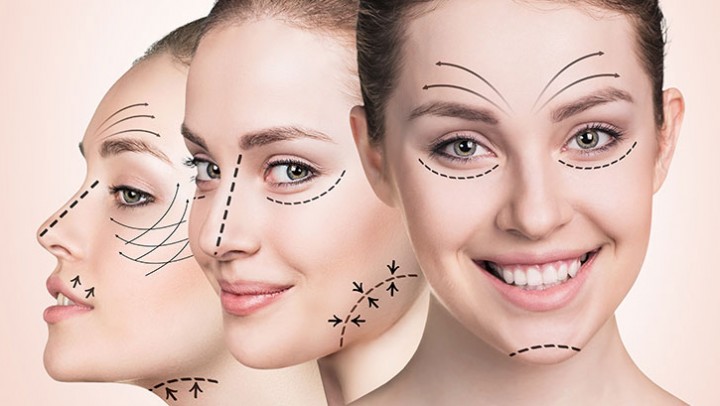
What is a Multi-Level Facelift?
Facelift Surgery
As we all know, aging is a completely natural and inevitable process. The loss of both superficial and deeper adipose fat tissue is what causes the undesirable sagging of skin, development of deep wrinkles, and thinning of the lips. These results of the aging process can be accelerated by factors such as over-exposure to the sun or drug/alcohol use. Considering aging is so universal, it’s no wonder some people might be inclined to restore some of the elasticity and youthfulness to their face. This is the primary goal of a facelift procedure. Drooping jowls or eyebrows, bags under the eyes, wrinkles, or a sagging neck are all common areas patients have successfully improved with facelift surgery. Where old facelift procedures would “pull” the skin tight around the face in an effort to forcibly smooth out wrinkles, this grew ineffective and often resulted in an artificially sleek looking face. This is because of the now-outdated focus on only surface level skin. With newer technology and practices, contemporary facelifts focus on deeper tissues in the face and aim to achieve a longer-lasting and more natural result.The Multi-Level Approach
The multi-level approach to a face-lifting surgery is a relatively recent approach to the cosmetic surgery industry. No single patient is the same and no single patient should be treated as such. That’s why Dr. Binder and his team adopted this highly-personalized method of surgery. Where one patient may desire a full-scale face and neck lift, another may only require a neck liposuction, double chin correction, or eyelid fat removal. This customizable technique of administering treatment is an ideal way to effectively deliver individualized results for everybody. The different facelift procedures are:- Vertical Midface Lift - Lifts the deep fat tissues, primarily of the jowls, and aims to prevent the unnatural “mask-like” look.
- Under the Chin Neck Lift - The Bidirectional Neck Lift takes muscle from underneath the chin and repositions it upward, creating a better contoured muscular sling. Results are long-lasting.
- Submental Neck Lift - Reinforces the platysmal muscle that is responsible for bands over the front of the neck.
- Neck Lipo - This procedure is aimed at younger patients with an excess of fat around the neck and a substantial amount of skin elasticity.
- Subperiosteal Midface Lift - Designed for younger patients who desire elevated cheeks. Produces nearly-invisible scars just above the hairline.
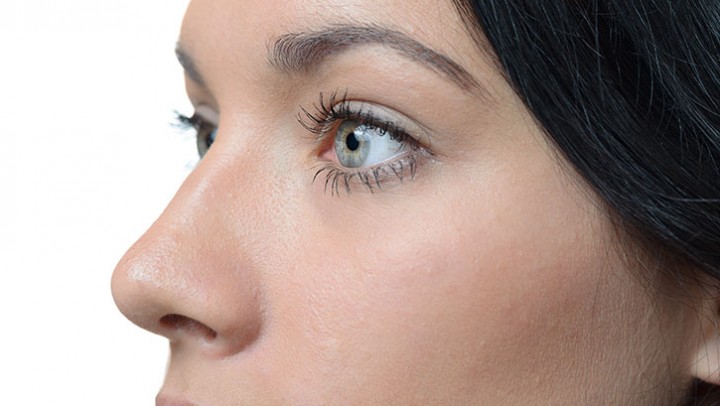
Open vs. Closed Rhinoplasty
- Nose size and proportion in relation to facial harmony
- Nose width at the bridge, or a profile with visible bumps on the bridge
- The size, shape, and position of the nostrils
- A nasal tip that is bulbous, drooping, upturned, or hooked
- Nasal asymmetry (an imbalance between the left and right hemispheres of the nose)
About Open Rhinoplasty
Open rhinoplasty is performed after an incision is made in the columella (the delicate tissue that separates the nostrils). This allows the surgeon greater access to the tissue throughout the nose. Because it allows increased visibility of the nasal tissue during the operation, an open rhinoplasty is easier for the surgeon to perform. Another advantage to having an open rhinoplasty is that it can also allow for more dramatic revision of the shape and proportion of the nose. The open technique does sometimes lead to more noticeable scarring than the closed rhinoplasty technique. Recovery after rhinoplasty using the open technique can also be more unpredictable and prone to complications than closed rhinoplasty recovery. On the other hand, open rhinoplasty can actually be less traumatic to the nose because the technique gives the surgeon more room to work and requires less modification to other internal nasal structures.About Closed Rhinoplasty
Closed rhinoplasty involves performing the surgery entirely inside the nose without interfering with the columella. An internal procedure prevents visible scars from showing, so it is more favorable to patients seeking a more subtle transformation with less intrusive techniques. The closed rhinoplasty technique does require a facial surgeon with more experience and precision than its counterpart, the open rhinoplasty. Although the closed rhinoplasty technique does result in minimal scarring, which is inside the nose and therefore not visible, it is also limited in the scope of the revisions it can make to the nose. Closed rhinoplasty recovery time can be easier and more predictable than recovery following rhinoplasty performed with the open technique, but it can also be more traumatic if a surgeon is indelicate or tries to make revisions that are too significant.A Brief History of Rhinoplasty
Cosmetic surgery procedures of today are so medically advanced that they bear little to no resemblance to the techniques that gave birth to the field of rhinoplasty. Believe it or not, the first nose job was performed over 2,500 years ago on the subcontinent of India. It was achieved by removing a portion of flesh from the patient’s face and using this biomaterial to form a new nose. About 20 centuries later, Europeans tried their hand at reimagining the human nose. Rampant warfare had left soldiers disfigured by the thousands, so medical experts of the time decided to engineer a prototypical grafting technique. It required the patient to keep his or her face pressed up against the upper region of the arm, allowing the skin around the new facial feature to re-grow. This process took a staggering three weeks of time, demanding an unimaginable level of stasis and contortion on the part of the recipient. After this initial phase of grafting, another two weeks was necessary to heal and reshape the flap of skin that was the patient’s de facto new nose. These early examples would be considered the ultimate in “open rhinoplasty” since they greatly altered the skin around the nose (and elsewhere on the body) to create drastically new facial protrusions for these rudimentary test cases. Luckily, technology and health sciences have made quantum leaps in the years since those dark old days. Instead of looking outward for tissue to replace the nose, skilled surgeons can utilize the flesh within it to craft a whole new look via closed rhinoplasty methods. Hence, you now have the benefit of extensive research, experience, and options as you approach the myriad possibilities for your impending rhinoplasty procedure.Is Open or Closed Rhinoplasty Best for Me?
Each rhinoplasty candidate is unique, so it is impossible to generalize and make a categorical statement about which rhinoplasty technique is better for all or even most patients. Health is never a “one size fits all” endeavor, so you should consult with a trusted physician before taking any definitive action. Generally speaking, closed rhinoplasty is typically preferred because of the easier recovery process and the minimal, hidden scars, but there are numerous situations in which an open technique may be better for the patient. Because it allows for more significant nasal revisions, open rhinoplasty may be preferable for candidates who are seeking a dramatic change, or who need dramatic reconstruction. A skilled plastic surgeon will still be able to minimize scar tissue and the appearance of scars following an open rhinoplasty. A patient who is only seeking a slight revision, or revisions that are concentrated on the bridge of the nose, and little to revisions desired for the tip of the nose, may be recommended to undergo the more subtle changes of a closed rhinoplasty operation.Recovery and Results: A Case Study
As mentioned above, open rhinoplasty techniques allow for greater flexibility when it comes to more dramatic alterations of the patient’s chief facial feature. This includes the passage to the tip of the nose from within since the surgeon has full access via the osseocartilaginous vault. But if you’re hesitant to consider this procedure due to its invasive nature, please consider this recent case study: 98 patients underwent open rhinoplasty procedures in a given time period. Of those 98 subjects, only two required revision rhinoplasties, indicating that the open method allowed the surgeon to successfully operate without the hindrance of a closed approach. And in terms of scarring, the incision mark along the columella was virtually invisible on all of the patients involved in the study within weeks of the date of their respective procedures.Is Rhinoplasty Right For You?
Regardless of which method of rhinoplasty (open vs. closed) you desire, you should be confident in your candidacy for the procedure before moving forward. As always, having a frank conversation with your doctor is the ideal first step in making this determination, but here’s a quick checklist to jump-start that talk… You are a potentially good candidate for rhinoplasty:- If you are of a mature enough age so that your facial growth is complete
- If you are in good overall health – while cosmetic surgery is safe on the whole, it does require a certain level of stamina to assure a speedy recovery
- If you are a non-smoker (tobacco use is detrimental to your health in a plethora of ways, damaging your skin, lungs, and thus increasing your recovery time)
- And if you have a positive, realistic outlook and goals for what you expect in the improvement of your appearance
Choosing the Right Plastic Surgeon for Your Rhinoplasty
Now that you have considered whether or not rhinoplasty is right for you, let’s ask an even more important question: who is the right doctor for your specific needs? Your facial surgeon must exude a trustworthiness so that you can ask him or her anything that’s on your mind before you set foot in the exam room. This individual can help you determine which technique is best for your rhinoplasty procedure during your initial consultation. It’s important to clearly communicate your expectations for the results of your rhinoplasty surgery and share your complete health history, including dental history, with your plastic surgeon, so that they can choose the best technique for your health and goals. It is therefore essential that you choose the right plastic surgeon for your rhinoplasty procedure in particular so that you can be confident in your results. A plastic surgeon who is skilled and experienced, especially in rhinoplasty, is the difference between glamorous plastic surgery results and a tragic plastic surgery horror story. If possible, patients should seek out a plastic surgeon who specializes in facial plastic surgeries like rhinoplasty.Dr. William J. Binder
Dr. William J. Binder is a facial plastic surgery specialist with over three decades of experience with facial plastic surgery. He is double board certified and has 10 U.S. and global patents on medical and surgical devices and pharmaceuticals and is extensively published across various medical journals. If you want your rhinoplasty, whether open or closed, performed by one of the world’s leading facial plastic surgeons, contact Dr. Binder’s office today to schedule your consultation.